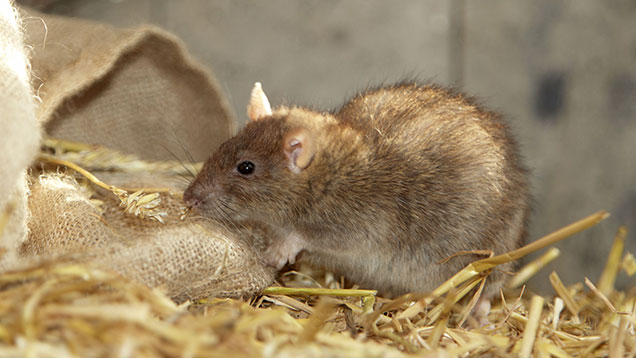Farmers warned to get on top of rat control now
 © FLPA/Rex Shutterstock
© FLPA/Rex Shutterstock Farmers are being warned to be alert for early signs of rats and nip any infestations in the bud to avoid a repeat of the serious and extended problems seen across the country last winter.
Sharon Hughes of BASF says with reasonable summer breeding conditions, the populations could be a problem this year.
See also: Get more advice on rat control with Farmers Weekly rat control academy course
“The fact that infestations continued to be troublesome right through to this spring in many cases suggests relatively high rat populations will have gone out into fields.
“So, with reasonable summer breeding conditions another substantial migration into farmsteads is again on the cards this season. Fail to hit any early infestations hard and you’ll be facing another losing battle to dislodge large, well-entrenched rat populations,” she warns.
She believes if farmers only act when they first see rats on the farm then it will be too late.
“Rats only become visible around active farm buildings when population pressures force them to forage in daylight hours. Otherwise, they only emerge to feed very discretely at night.”
Rats infestations can be spotted by looking weekly for tell-tale signs from the end of August. Signs include:
- looking for rat runs along the sides of buildings
- faeces and hair in and around stored grain and feed
- discarded grain and feed where they shouldn’t be
- freshly-gnawed bottoms of doors, fences and partitions
She adds: “Once you see any signs, search the whole farmstead, concentrating on over-grown vegetation close to buildings, on sites where waste wood, pallets, tyres or other materials are stacked, along the internal and external sides of buildings, and in the quieter, more concealed areas rats invariably favour.”
Ms Hughes says at the first sign of an infestation the best way to control them is to use a rodenticide. She suggests using bait points wherever activity is detected and filling them with a highly palatable rodenticides.
Whatever bait is used, Ms Hughes is adamant it has to be put down in the right places, kept well topped-up according to the label so all the individuals can consume a lethal dose, and left in place until all signs of rat activity cease but no more than 35 days.
She also stresses the importance of protecting other wildlife and pets by covering and protecting the rodenticide adequately, removing all rodent carcasses and clearing any unused bait away thoroughly once control has been achieved.
